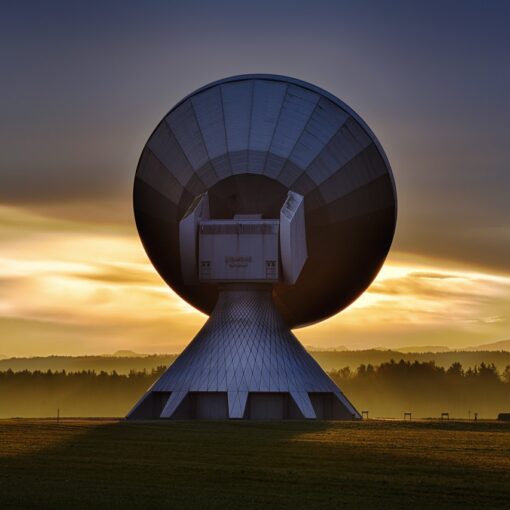When it comes to ham radio and technology: how innovation is transforming the hobby isn’t always easy to define, and there are numerous changes that have helped shape this overall. Indeed, the modern ham radio system is undoubtedly far removed from its early origins.
As such, today, we’re summarizing some of the key things you need to know about ham (amateur) radio and how technology has helped shape this hobby in the modern day.
Ham Radio and Technology: How Innovation is Transforming the Hobby
Since the early origins of Ham Radio, the role of this brilliant hobby has irrefutably changed with the growth of the technology’s availability – largely driven by innovations in technology that have helped make such systems more affordable.
Due to the increasing affordability of Ham Radio, these systems have become synonymous with electronics and communication enthusiasts as a popular hobby. Nonetheless, getting started is relatively straightforward. Thus, with a little basic knowledge of radio communications technology, individuals can establish a new passion for amateur radio with relative ease.
The rise of remote education and information has further supported this, making it easier than ever for amateurs to learn the basics needed. Hence, many have a comms system set up in their home or garden as part of a hobby. However, becoming an operator still requires some skill as it is a licensed service; thus, though it’s not necessarily difficult to get going, a basic knowledge of radio signals and electronics is needed to operate on amateur wavelengths.
These days, ham frequencies are managed by the FCC (Federal Communications Commission).
How Did Ham Radio Originate?
When we think of modern-style ham radio systems, we generally think of the technologies that were first integrated in the early 20th century. Indeed, in 1909, a book was published detailing all of the different amateur radio stations of the time across the United States and Canada. One such example is the “ham radio,” a term that’s generally used to describe amateur radio communications and activities, primarily with FM and SSB frequencies.
Of course, the term “ham radio” itself isn’t very descriptive, and it can seem a little misleading to understand how this came to be. However, in reality, the term is relatively simple to understand.
“Ham” in this scenario refers to the concept of being ham-fisted (unrefined) at morse code. This would later be used to describe amateur radio users more generally. However, as time has passed, users’ knowledge of radio systems has undeniably grown and expanded.
Although the term was originally used as a pejorative phrase, this meaning began to fall out of favor as the years passed by.
The contributions of so-called ham radio enthusiasts to science helped establish the amateur radio community as playing a highly crucial role overall. As such, innovation is clearly transforming the hobby from the outside; however, enthusiasts have simultaneously helped innovate the scientific and communications fields indirectly.
Early 20th Century
Ham radio has been around since the early 20th century. The earliest known club for such activities was the Wireless Telegraph Club of Colombia University.
However, far from just being a hobby, it originally had very important applications. For example, during the First World War, these systems were implemented as a means of communication between trenches. Moreover, amateur communications were also used during the Second World War as part of the emergency war radio service. This network provided integral updates to the allied troops on the state of the war.
Mid-20th Century
Looking to the post-war era, significant changes took place. The most apparent of these was related to satellite technology.
During the 1950s, the very first amateur radio satellite was launched, known as OSCAR I. This new satellite paved the way for a more globalized radio communication service, therein revolutionizing the way people communicated going forward.
Late 20th Century
During the 1970s, 80s, and 90s, the number of amateur radio operators grew significantly, especially prior to the arrival of mobile telephone technology. Moreover, as the popularity of such systems grew, so did the services catering to them. For example, this led to 30, 17, and 12-meter radio bands rolling out.
The increased array of services provided a dedicated space for amateurs to practice, communicate, and share their skills with others. This would irrefutably help spur on the growth of the industry further.
During the 1980s, huge steps were made to help develop amateur radio. The development of automated message systems was a key turning point. Computers were programmed to send messages at set intervals, repeating messages. This proved useful after natural disasters when other communication methods were knocked out.
The 1990s also saw the introduction of sound cards. These helped improve the clarity of radio signals, even when sent from amateur devices.
Modern Ham Radio Systems
Moving forwards towards the modern day, one of the biggest changes is the digitalization of the service. Many new set-ups use digital technology in order to help improve range, make it easier to communicate with and get into ham radio as a hobby. Digitalization also allows for easier changing and tuning frequencies. It’s even possible to send music through this system.
Such communications have proven themselves vitally important during times of natural disaster and terrorist attacks. Ham radio has been used to help with disaster relief during Hurricane Katrina, the 2001 attacks on the World Trade Center, helping with Red Cross disaster relief, and more.
Final Thoughts
Ham radio has come a long way since its inception in the latter part of the 19th century. With this thought in mind, considering the relationship between ham radio and technology: how innovation is transforming the hobby is crucial. Indeed, though ham radio largely still follows the same basic principles, it has irrefutably evolved with time.
Luckily, this relationship is relatively easy to understand. After all, as with many forms of communication, we’ve seen numerous different changes with the increasing rollout of new technologies. And so, hopefully, today’s guide will have outlined some of the key properties of ham radio systems and how they have evolved.
References
https://spectrum.ieee.org/ham-radio
http://www.arrl.org/





